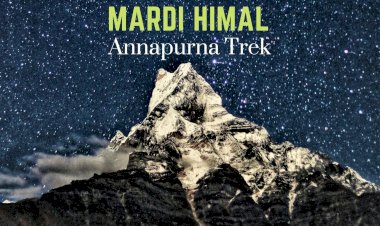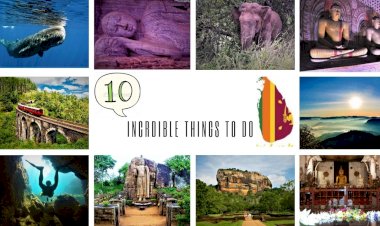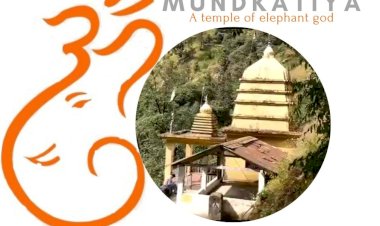Guptipara - The Art and Cultural icon of West Bengal
West Bengal is known for monuments and temples and draws tourists across the globe.A few man made wonders of terracotta are marvels till today. Among them Guptipara located in North Bengal is a example of fine art.The village not only is known for art, but a cultural centre, a place durge puja originated.The memories of visit can be made more realistic by tasting Gupo sandesh, a traditional sweet dish originated from this place.
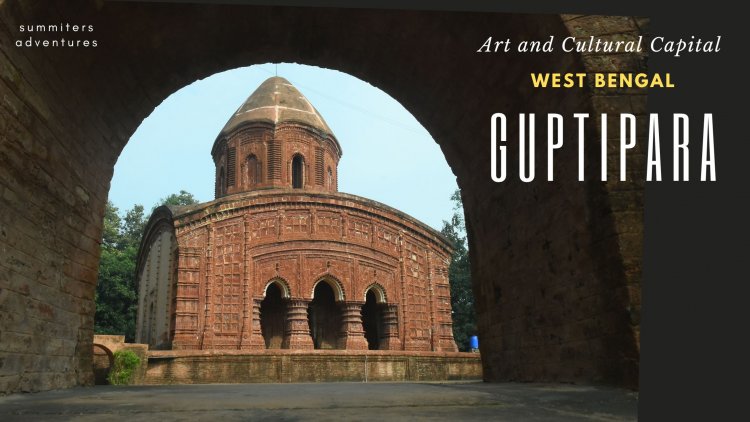
Little did I know about terracotta architecture, when I visited Ambika Kalna, nestled in the Bardhamaan region of West Bengal about 2 decades back. During a recent visit, to the Sundarbans, I managed to utilize 2 days for a North Bengal tour.
The little-known Guptipara was on the list. Snugly nestled amidst the lush landscapes of West Bengal, is Guptipara about 80 km north of Kolkata. Today still stands as a symbol of the rich example of culture and heritage that defines this region. This quaint and charming village, with its roots dating back to several centuries, offers a captivating journey into the rich history and reflects the cultural and tradition of West Bengal.
In Bengali, Guptipara means a “hidden neighborhood”. Guptipara is an ideal place for Bengal sweet lovers. The most famous among them is the Gupo Sandesh (made of channa extracted from cow’s milk), considered by many to be Bengal’s first branded sweet.
Guptipara is said to be the birthplace of sweet maker Bhola Moira, who was famous not for sweet making skills but for his Kabi gaan (folk songs) of bengal.
Gupo Sandesh at sweetmart made with Jaggery

Guptipara is also the home of Bengal’s first “Barowari” (publicly organized) Durga Puja. In the 1760s, a group of men were stopped from taking part in the household Durga Puja of the ruling Sen family in Guptipara.
In retaliation, seven of these men unitedly formed a committee and organised their own “Barowari Puja.”
(In Sanskrit Bar means ‘public’ or ‘community’, and in Farsi wari means ‘by’ or ‘for’).
We visited the sweet shop to taste the authentic Gupo Sandesh.The sweet made from jaggery really tasted the best !
Kail Temple at Guptipara
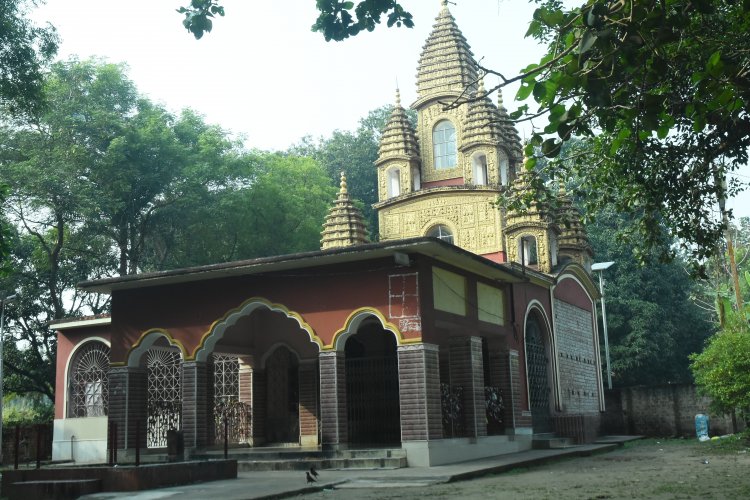
The concept of community Durga Puja was later brought to Kolkata in 1832.Today gurga puja is celebrated throughout bengal as a state festival during Dusshera in much pomp and joy.
The idols on the roadside below a pipal tree drew my attention.It was of Kali maa, Durga after puja being displayed.We drew through the narrow roads to decipher the temples location.
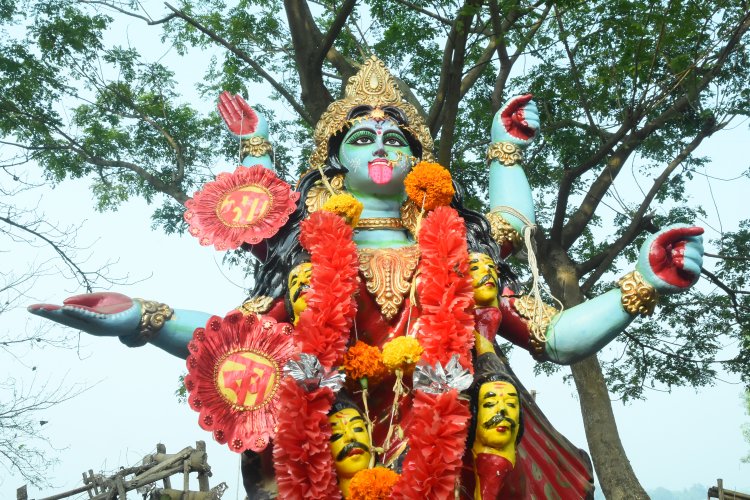
Guptipara was also once known as a secret place of Tantric practice. This is known from the researched genealogy of Chattashovakar clan.
It is said that there was a Dasamahavidya temple in ancient times at Guptipara which no longer exists. Some say the nearby Deshkali Mata temple stands on the site of this much earlier structure.
Guptipara also was a popular as a seat of study of Sanskrit language, the village gave birth to many famous scholars of Nyayashastra and Smritishastra.
But today the primary attraction of Guptipara are its terracotta temples, located a short walk from the village.Only few interested in art and architecture visit even today. Arranged in a quadrangle and enclosed within a high wall, the protected monument entire complex is collectively known as
Brindavan Chandra Math, and consists of four temples dedicated to Chaitanyadev (Chaitanya-Nityananda), Brindavan Chandra (Radha-Krishna and Jagannath), Ramchandra (Rama, Sita, Lakshmana and Hanuman) and Krishnachandra (Radha-Krishna).
Ramachandra Temple
The west-facing Ekratna Ramachandra Temple is said to have constructed by King Harishchandra Roy of Sheoraphuli in Hooghly during the reign of Sadananda Roy Dandiswami (1822-29 CE). With an octagonal shikhara resting on charchala roof, one can see the west and south-facing elevations being adorned with fantastic rich and intricate terracotta work.
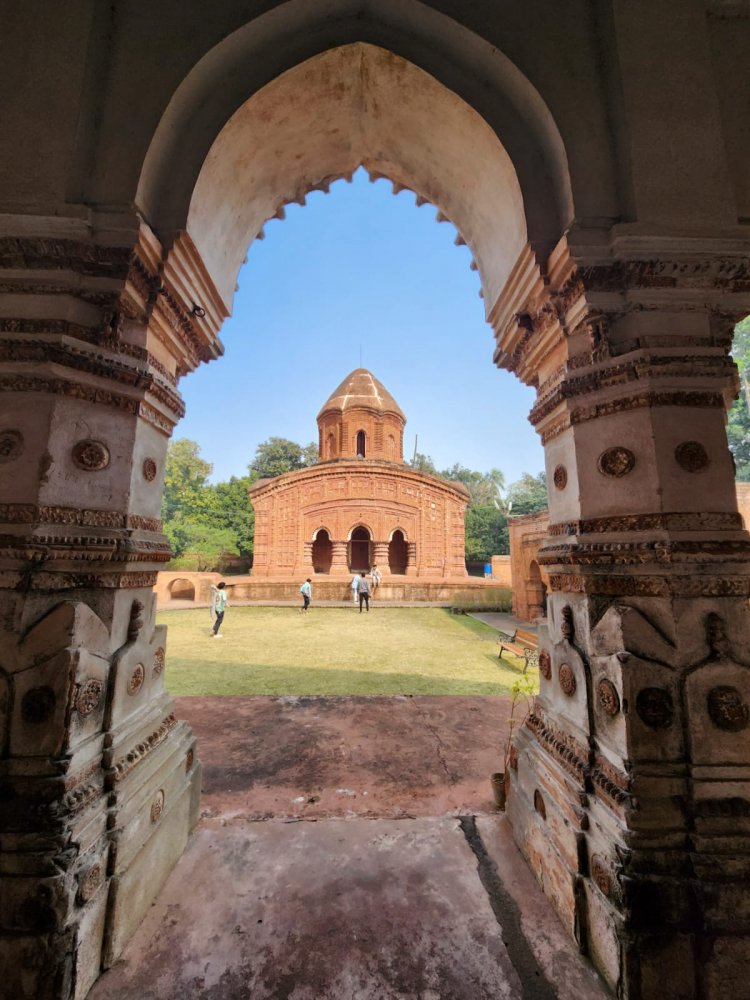
The outer walls depict scenes from epic Ramayana, royal processions , long local river boats with makara ( Crocodile ) prows propelled by men with oars, Shiva riding with Parvati on celestial vehicle bull, unusual scenes of men fighting bare handed with lions , european soldiers with guns at sea and on land, warriors on elephants, horses, and fantastic lions, hunting scenes, images from various avatars and forms of Durga can seen around.
One should witness the site in soft light in morning and again in the evening. To capture good pictures at it as best On both occasions Thouh there were few local visitors engaged in taking selfies and walking around.For me it was different experience.
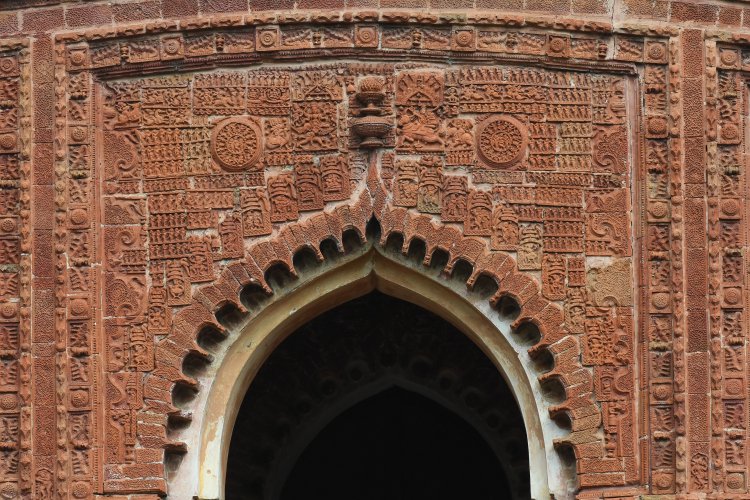
Terracotta adorns both the west-facing temple entrance, as well southern side of the temple. This is still extremely elaborate, including some wonderful stone fake doors, and the equally exquisite terracotta high up on the single octagonal shikhara.
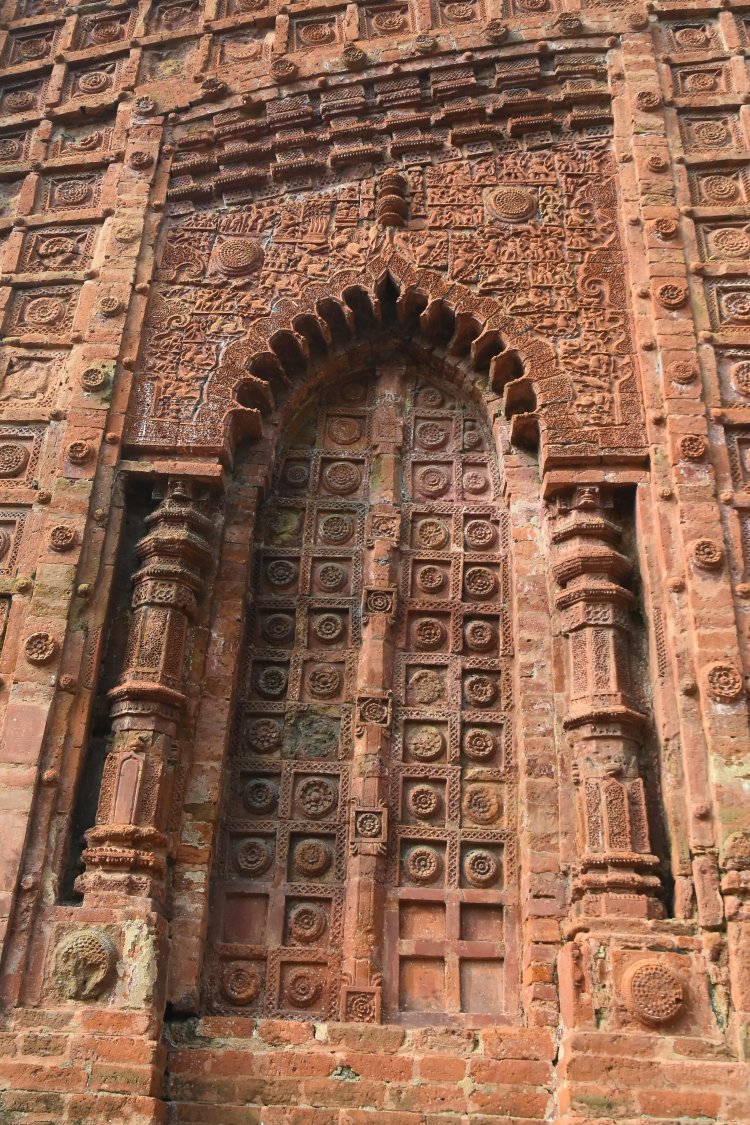
The presiding deities of temple are of Lord Shri Ram, Lakshman, Sita Devi and Hanuman in the sanctum sanctorum of the temple.
Brindavan Chandra Temple
Brindavan Chandra Temple dominates the complex. It is widely thought this atchala temple was built around 1810 CE under the patronage of Zamindar Ganga Narayan Sarkar of Bagbazar, said to be assisted by King Vishveshwar Roy who donated several lands and properties in the name of the temple in Somara region, which is adjacent to Guptipara.
There is little terracotta work on the facade of the temple, but the real joy of this temple, lies within the temple interior.We were not able to witness this, as it was closed.
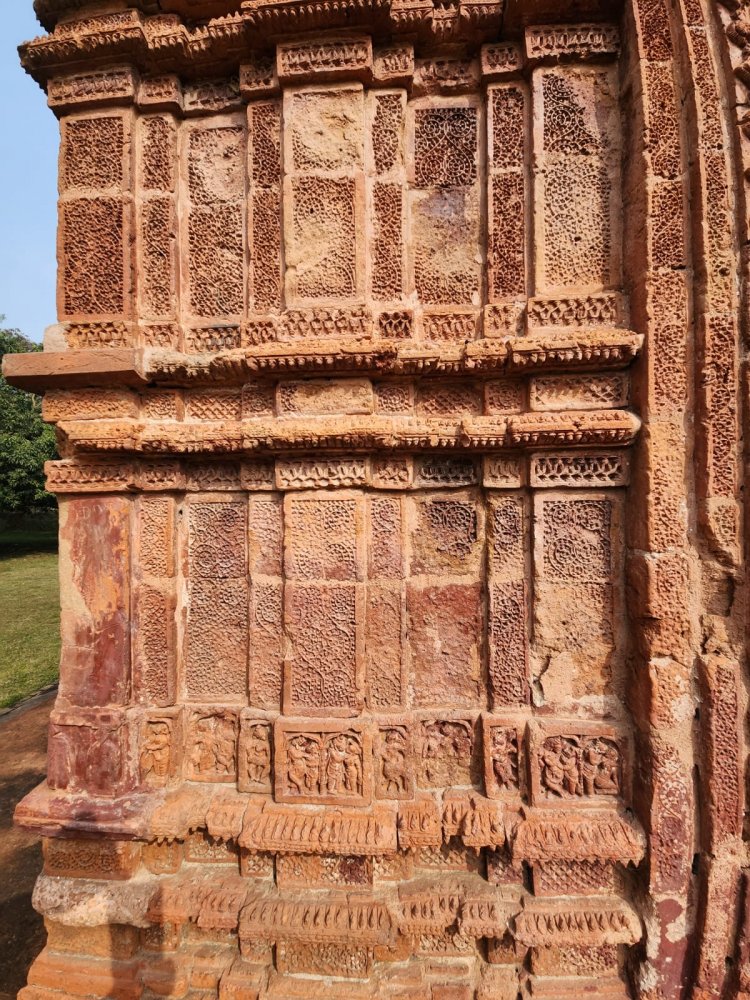
The inner verandah and sanctum of the temple are richly adorned with fresco paintings, both on the walls and ceiling. Various mythological stories are told, accompanied with vibrant flower and vine motifs.The paintings and architecture here were out of world !
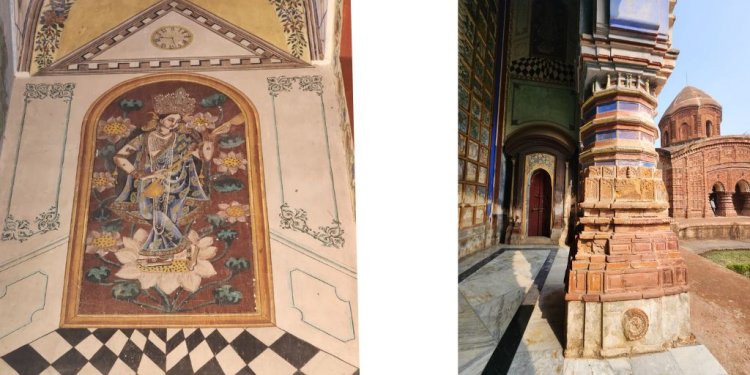
It is said in the sanctum of the temple are the dark blue Shri Brindavana Chandra, next to a golden Shri Radhika. Right behind them are the trinity of Jagannath, Balabhadra and Subhadra. On the day of the Rath Jatra these three idols are carried out by the towering rath - a chariot, known as ulto rath to another temple called Masir Bari, where they are kept for a weeklong, after which the journey is retraced back to the Brindavan Chandra Temple.
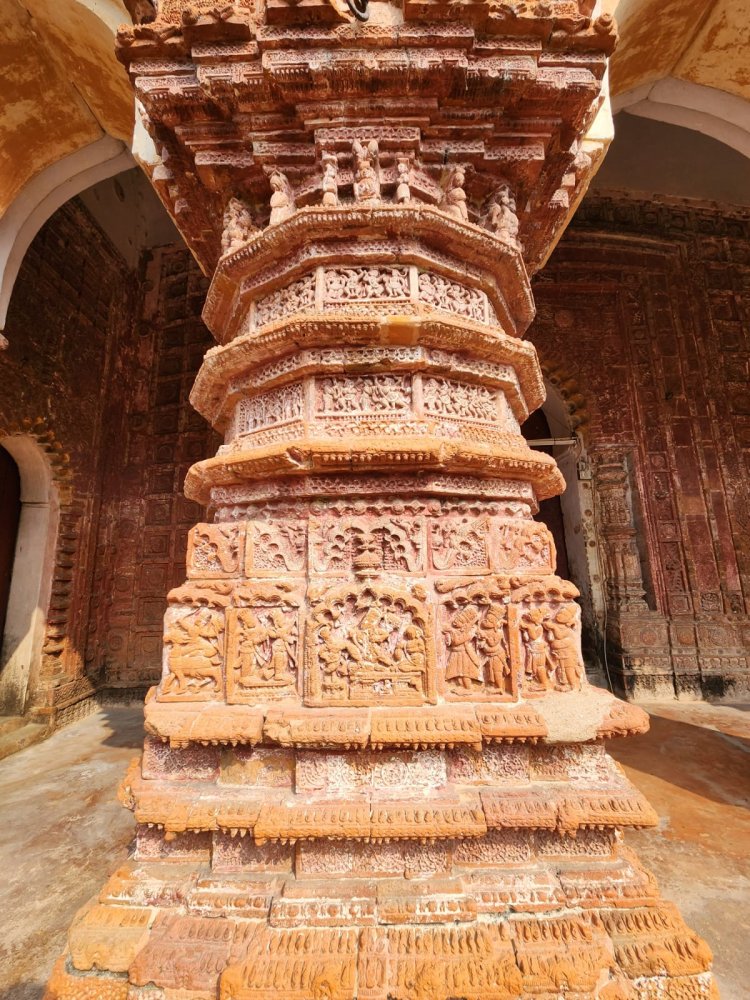
The intricacy on the pillars, which has local lores carved all over is sadly wearing out. There is history on the pillars on every brick. With the passage of time, it will be erased forever ?
It is said that Satyananda Saraswati, a monk of Dashanami sect, brought the idol of Brindavan Chandra from Shantipur and consecrated it in Guptipara during the reign of Mughals in Bengal. It is said that this idol is the sole survivor of an earlier temple that once resided where
Brindavan Chandra now stands today.
Chaitanya Temple
Chaitanya temple is the smallest of the four temples in the complex.It seems overshadowed by its larger counterparts. However, in many respects this is architecturally the most significant temple here, as it is widely believed to be the earliest Bangla-style temple still standing.
David Mc Cutchion ascribes construction date of temple to late 16th to early 17th century, contemporary with the reign of Akbar (1542 – 1605 CE). Although almost all the terracotta work has now been lost, he observed that what remains is comparable with the ornamentation of the late 16th century
Krishna Chandra Temple
The temple is said to have been constructed in 1745 CE during the rule of Nawab Alivardi Khan, the east-facing Krishna Chandra atchala temple was probably once more extensively covered with terracotta work and paintings , but now one can see few frescos on the wall and ceiling of the temple. Only a small amount survives around the triple-arched entrance.
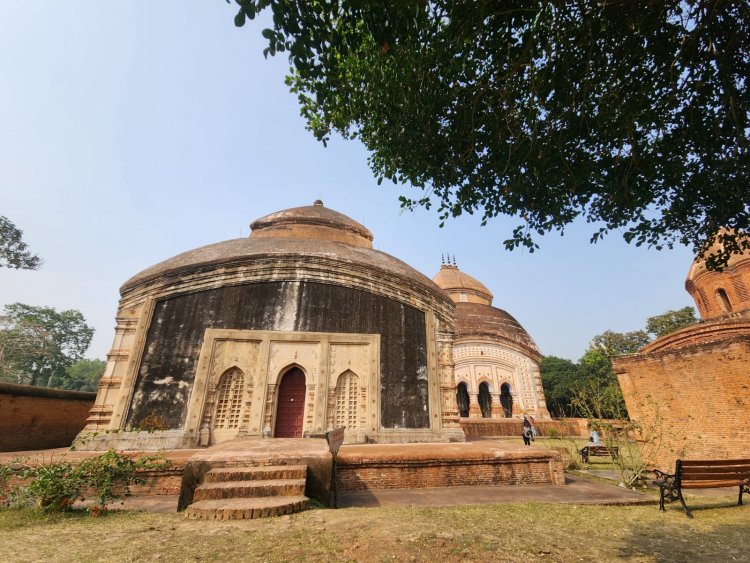
The temple houses the idols of Shri Krishnachandra and Shri Radhika are currently presiding in the sanctum sanctorum. Though there were few local visitors, the temple was closed.
Artistic Gateway
One can gain entry from the southern side of the courtyard opposite the Brindavan Chandra Temple stands a gateway, the main entrance into the temple complex. Although looks renovated, it still retains much of the terracotta charms even today
I felt that the terracotta Vaishnavite temples here definitely require more attention and care.The travelers visiting westbengal are limited only to popular temples and tourist places.Even few bengalis dont know about this cultural connection and nondescript town.
ASI has declared it as a protected monument and done its work. Travel companies too have failed to mention this rich heritage place in their travel brochures.
How to reach Guptipara
Best way going there is to take the morning Howrah-Katwa local and get down at Guptipara station. From there take a toto and reach Sen house.
Alternately the same can be reached by road by hiring a local taxi from Kolkata.









